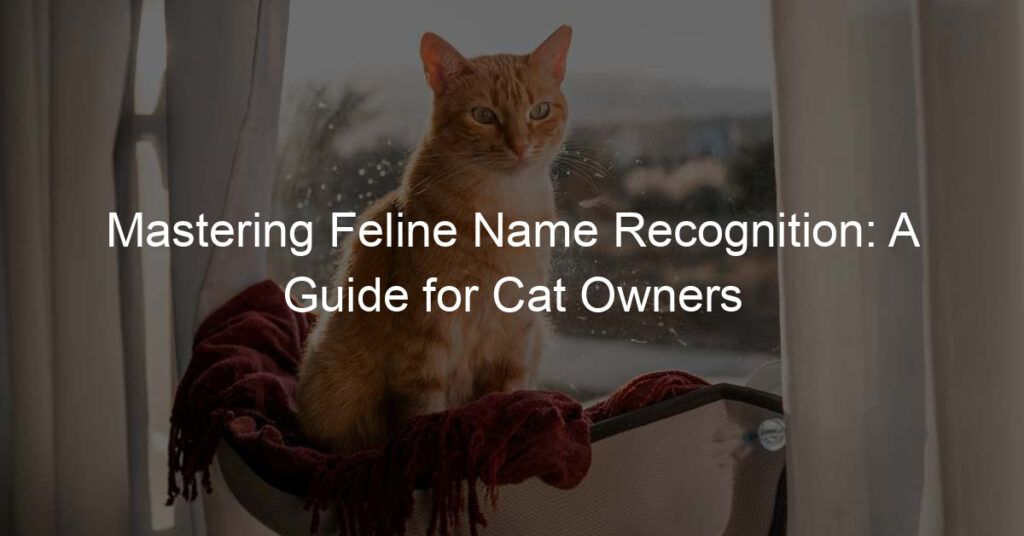
Introduction to Cat Communication
Have you ever wondered what your cat is trying to tell you? Cats communicate in a variety of ways, and understanding their language can significantly enhance your bond with your furry friend. In this section, we will delve into the basics of cat language and the importance of cat-human interaction.
- Understanding the basics of cat language
- The importance of cat-human interaction
Cats use a combination of vocalizations, body language, and scent marking to express their feelings and intentions. For instance, a purring cat is usually content, while a hissing cat is likely scared or angry. A cat’s tail can also tell a story: an upright tail signals happiness, while a puffed-up tail indicates fear. Understanding these basic cues can help you respond appropriately to your cat’s needs and emotions.
Interacting with your cat is not just about understanding their language, but also about building a strong bond. Studies show that cats can form secure attachments to their human caregivers, similar to the bonds between parents and children. Regular interaction, such as playing and grooming, can strengthen this bond and contribute to your cat’s overall well-being. Moreover, a strong cat-human bond can make training easier and more effective.
In the following sections, we will delve deeper into cat behavior, teach you how to command your cat, and explore advanced aspects of cat language. By the end of this guide, you will be well-equipped to enhance your cat-human interaction and understand your feline friend better.
Understanding Cat Behavior
Understanding your feline friend’s behavior can be a fascinating and rewarding experience. Cats, like humans, have a unique way of communicating their feelings and needs. Let’s delve into some common cat behaviors to help you better understand your furry companion.
Recognizing Common Cat Behaviors
There are two primary ways cats express their emotions and intentions: through their tail movements and vocalizations. By learning to interpret these, you can gain a deeper understanding of your cat’s mood and needs.
- Decoding Tail Movements
- Interpreting Cat Vocalizations
Cats use their tails to express a wide range of emotions. A high, straight tail often indicates happiness and confidence, while a low or tucked tail can signal fear or submission. If your cat’s tail is puffed up, it’s likely they are feeling threatened or agitated.
Cats communicate vocally in a variety of ways. A purr typically signifies contentment, while a hiss usually means your cat is upset or feels threatened. Meowing can have different meanings depending on its tone and volume. A loud, demanding meow might be a request for food or attention, while a soft, plaintive meow could indicate discomfort or distress.
Understanding these common cat behaviors can greatly enhance your relationship with your feline friend. Remember, each cat is unique and may display behaviors slightly differently. The key is to observe and learn from your own cat’s behavior patterns.
Understanding Cat Responses to Human Words
Have you ever wondered if your cat understands what you’re saying? While cats may not understand human language in the same way we do, they can recognize certain words and tones. Let’s explore this fascinating topic further.
- How cats comprehend human language
- Case study: Cat response to different verbal commands
Cats, unlike humans, don’t rely on verbal communication as their primary form of interaction. Instead, they use a combination of body language, scent, touch, and vocalizations. However, this doesn’t mean they can’t understand some aspects of human language.
Research shows that cats can recognize their owner’s voice and differentiate it from a stranger’s. They can also associate certain words or phrases with actions or objects. For example, if you consistently use the word “treat” when you’re about to give your cat a snack, they’ll likely come running at the sound of that word.
It’s important to note that cats respond more to the tone and volume of our voice rather than the specific words we use. Speaking in a soft, soothing voice can help your cat feel calm and safe, while loud or harsh tones may scare them.
Let’s look at a case study to better understand how cats respond to verbal commands. A study conducted by researchers in Japan found that cats could recognize their owner’s voice but often chose not to respond. This doesn’t mean they don’t understand; it’s just that cats, being independent creatures, decide whether or not to respond.
In the study, the cats responded more frequently to their owner’s voice when it was associated with positive experiences, like feeding or playtime. This suggests that cats can learn to respond to certain words or phrases if they’re associated with positive outcomes.
Understanding your cat’s response to human words can enhance your bond and communication with them. Remember, patience and consistency are key when trying to communicate with your feline friend.
Teaching Commands to Cats
Training your feline friend can be a rewarding experience. Not only does it strengthen your bond, but it also helps maintain a harmonious household. Here are some effective techniques to teach your cat commands.
Effective Cat Training Techniques
Training cats is different from training dogs. Cats respond better to positive reinforcement and consistency. Here’s how you can use these techniques:
- Using Positive Reinforcement
- Consistency in Commands
Cats are more likely to repeat a behavior if it’s associated with a positive outcome. When your cat follows a command, reward them with a treat, a pet, or verbal praise. This positive reinforcement encourages them to repeat the behavior in the future. For example, if you’re teaching your cat to sit, reward them immediately after they sit down. This helps them associate the action with the reward.
Consistency is key when teaching commands to your cat. Use the same words and gestures each time. If you change the command, it can confuse your cat and slow down the training process. For instance, if you’ve been using the word “sit” to get your cat to sit, don’t suddenly change it to “down”. Consistency helps your cat understand what you want from them.
Remember, patience is crucial when training your cat. It may take time for your cat to understand and respond to your commands. But with consistent effort and positive reinforcement, your cat will eventually learn to follow your commands.
Common Cat Commands and Their Meanings
Understanding your cat’s behavior is essential for a harmonious relationship. This section will help you understand some common cat commands and how to teach them to your feline friend.
- Examples of common cat commands
- How to teach these commands to your cat
- Choose the right time: Cats are more receptive to learning when they are relaxed and alert. Avoid training sessions immediately after meals or when your cat is tired.
- Use positive reinforcement: Reward your cat with treats or praise when they correctly follow a command. This encourages them to repeat the behavior.
- Be consistent: Use the same words and tone of voice each time you give a command. This helps your cat understand and remember the command.
- Practice regularly: Regular practice helps your cat remember the commands. Aim for short, frequent training sessions.
Here are some examples of common cat commands that you can teach your cat:
| Command | Meaning |
|---|---|
| “Sit” | This command is used to make your cat sit down. |
| “Stay” | This command is used to make your cat stay in one place. |
| “Come” | This command is used to call your cat to come to you. |
Remember, each cat is unique and may respond differently to these commands. Patience and consistency are key.
Teaching commands to your cat can be a fun and rewarding experience. Here are some steps to follow:
Remember, the goal is to enhance communication with your cat, not to control them. Respect your cat’s boundaries and never force them to do something they are uncomfortable with.
Advanced Cat Language
As we delve deeper into the world of feline communication, we discover that there’s more to cat language than meets the eye. Cats have a complex language system that goes beyond simple meows and purrs. Let’s explore this advanced cat language and learn how to understand complex cat behaviors.
Understanding Complex Cat Behaviors
Complex cat behaviors are often subtle and nuanced, requiring keen observation and understanding. Let’s take a closer look at these behaviors and how we can interpret them.
- Interpreting nuanced cat behaviors
- Key takeaways for cat owners
Cats often communicate their feelings and intentions through their body language. For instance, a cat with its tail straight up is usually happy and relaxed, while a cat with its tail puffed up is likely feeling threatened or scared. Similarly, a cat that is slowly blinking at you is showing trust and affection. Understanding these nuanced behaviors can help you better communicate with your cat and respond to their needs.
Understanding your cat’s behavior is key to building a strong bond with them. Here are some key takeaways for cat owners:
| Behavior | Meaning |
|---|---|
| Tail straight up | Happy and relaxed |
| Tail puffed up | Feeling threatened or scared |
| Slow blinking | Showing trust and affection |
Remember, every cat is unique and may display behaviors differently. Always observe your cat’s behavior in context and consider their overall body language and environment. With patience and observation, you’ll soon be able to understand your cat’s advanced language and communicate with them more effectively.
Teaching Advanced Commands to Cats
Training a cat can be a rewarding experience, not only for the cat but also for the owner. It’s not just about teaching them basic commands, but also about understanding their complex behaviors and needs. Let’s delve into some advanced cat training techniques and examples of advanced cat commands.
- Advanced Cat Training Techniques
Training a cat requires patience, consistency, and a good understanding of their behavior. Here are some advanced techniques that can help you communicate better with your feline friend:
- Clicker Training: This is a popular method used to train various animals, including cats. It involves using a device that makes a distinct ‘click’ sound to signal to the cat that they’ve done something right.
- Target Training: This involves teaching your cat to touch a specific object with a part of their body, like their paw or nose. It’s a great way to keep your cat mentally stimulated and active.
- Agility Training: This is a fun and engaging way to train your cat. It involves setting up an obstacle course and teaching your cat to navigate through it.
- Examples of Advanced Cat Commands
Once you’ve mastered the basic commands like ‘sit’ and ‘stay’, you can move on to more advanced commands. Here are some examples:
- ‘Touch’: This command can be used to get your cat to touch a specific object or person with their paw or nose.
- ‘Jump’: This command can be used to get your cat to jump onto or over an object.
- ‘Fetch’: While this is typically associated with dogs, cats can also learn to fetch objects. It’s a great way to keep them active and engaged.
Remember, every cat is unique and will learn at their own pace. Be patient, consistent, and always reward good behavior. With these advanced techniques and commands, you’ll be able to communicate with your cat on a whole new level.
Conclusion: Enhancing Cat-Human Interaction
As we wrap up our discussion on cat communication, it’s clear that understanding our feline friends is not only possible but also beneficial. By learning to interpret their language and behavior, we can significantly enhance our interactions with them.
- The benefits of understanding cat language
Understanding cat language goes beyond merely knowing when your cat is hungry or wants to play. It opens up a whole new level of interaction and bonding. Here are some key benefits:
- Improved Relationship: When you understand your cat’s language, you can respond to their needs more effectively, leading to a stronger bond.
- Enhanced Care: Recognizing signs of distress or illness early can help ensure your cat gets the necessary care promptly.
- Reduced Misbehavior: Many behavioral issues stem from misunderstandings. By understanding your cat’s language, you can address the root causes of such behaviors.
- How to further improve your cat-human interaction
While understanding cat language is a significant step, there are other ways to further improve your interaction with your cat:
- Consistent Response: Cats learn through consistency. Responding in the same way to certain behaviors will help your cat understand what you expect.
- Positive Reinforcement: Rewarding your cat for good behavior is more effective than punishing for bad behavior. Use treats, praise, or extra playtime as rewards.
- Respect Their Space: Cats value their personal space. Respecting this can lead to a more trusting relationship.
In conclusion, understanding cat language and behavior can significantly enhance the quality of your interaction with your cat. It’s a journey of discovery that can lead to a deeper, more fulfilling relationship with your feline friend.








